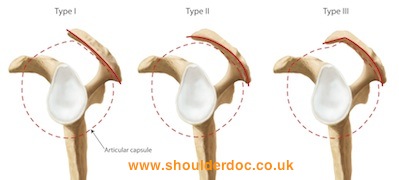think so, did you read the latin words,the summary?its somewhere on page 1.
Yes. Let's make sense of all this fancy medical jargon...
AC joint inflammation & arthritis as mentioned in what you wrote: "some arhtrosisbut big inflammation in "ac"joint, medium edema in extremitas acromialis claviculae"
This is simply arthritis developed at the joint that's found in between your clavicle and acromion.

Just from the AC joint arthritis alone, I could see you having many day-to-day pain issues as it causes localized inflammation and pain. Typically, the bone spurs at the distal end of the clavicle tend to look Moth-eaten when visualized by way of X-rays. This typically occurs in older individuals, as well as adamant weight-lifters due to prolonged wear and tear. You can live with this, but it tends to be painful and messes with your workouts. Physical therapy and Anti-Inflammatory drugs are the first line of action, followed by surgery is no progress is seen.
For this, they will most likely perform a distal clavicle excision (which will hopefully alleviate some of the AC joint arthritis that is causing you so much pain). They will literally file down the distal end of your clavicle.
Subacromial impingement as mentioned in what you wrote: "bent akromion"
I am assuming, as a few others have mentioned here that your acromion qualifies as a level III, which looks like this:

They will most likely provide you with a little subacromial decompression to tackle that "bent' acromion when they perform arthroscopic surgery of your shoulder.
Rotator-Cuff thickening as mentioned by what you wrote: "the rotator cuff in this area is EXTREMLY thickened and has a central and peritendinos edema,al the way to the infraspinatus tendon."
This is just a fancy term for inflammation that affects the four muscles and tendons that comprise the rotator cuff. Once they perform surgery, they will amplify the space between both the rotator cuff and acromion and this will alleviate both the pain and inflammation (thickening) that you are experiencing.
Synovial Cysts as mentioned by what you wrote: "several signal cysts in tuberculum majus humeri"
The synovial fluid is like lubricating fluid that sits in between joint of your shoulders. When there is an impingement, that causes the sheath (or synovium) that holds this fluid intact to bulge out, you are then left with a synovial cyst. Most are not a big deal, but when they press upon localized nerves, you can have some numbness in the region, which can be problematic. They will remove these cysts during your surgery.
Ultimately, it will suck for a couple of months after surgery, but with a little physical therapy, proper nutrition and attention to your body as your best indicator of pain, you should be fine.
"
1"